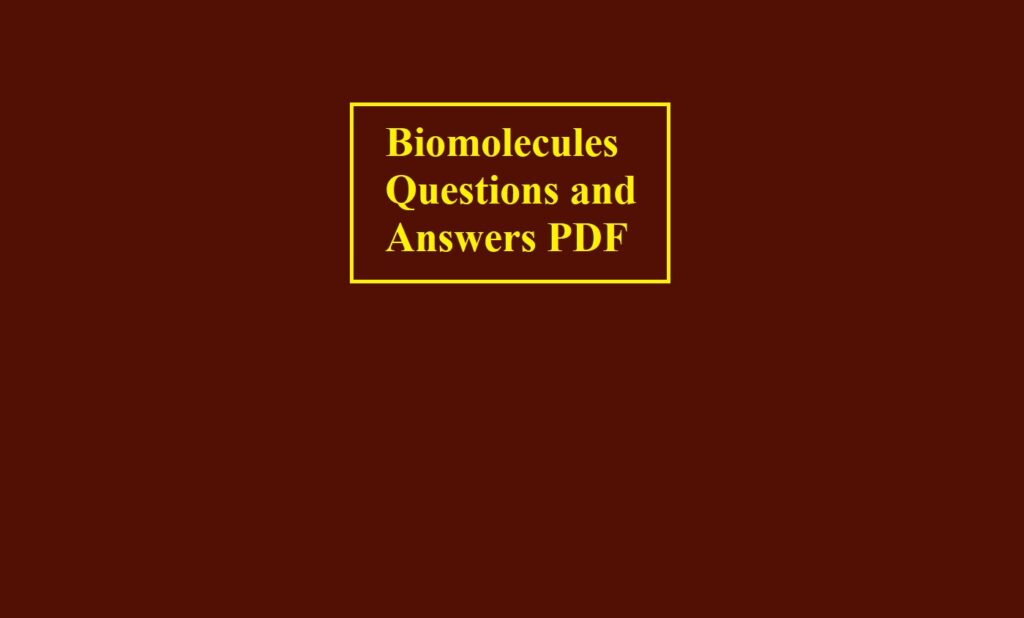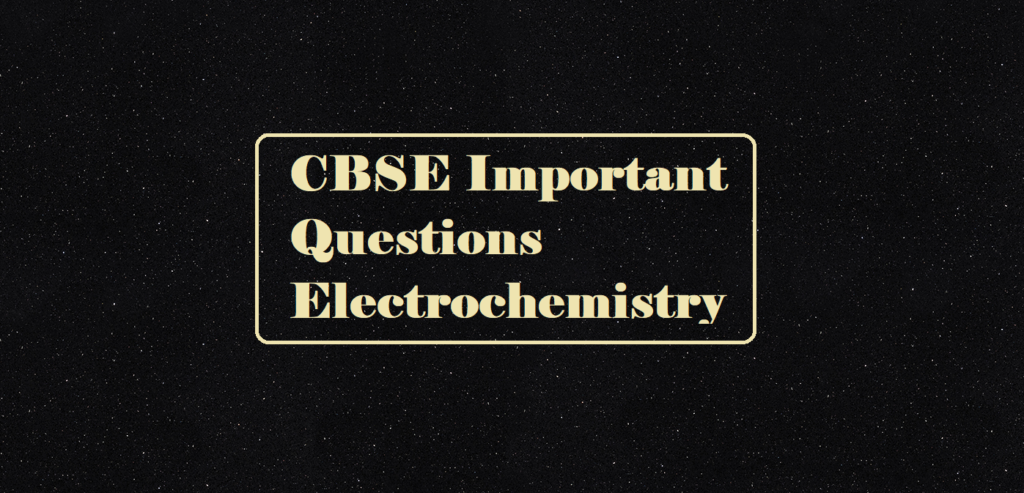Biomolecules Questions and Answers PDF
Biomolecules Questions and Answers PDF
Que 1. What are monosaccharides?
Ans 1. The simplest carbohydrates that cannot be hydrolyzed to smaller molecules are known as monosaccharides e.g., glucose, fructose, etc.
Que 2. What are reducing sugars?
Ans 2. The sugars which reduce Tollen’s reagent, Fehling’s Solutions etc. are called reducing sugars. e.g., all monosaccharides, disaccharides except sucrose.
Que 3. What is the structural feature characterizing reducing sugar?
Ans 3. The reducing sugars have a free aldehydic or ketonic group.
Que 4. What are carbohydrates generally optically active?
Ans 4. Due to the presence of chiral or asymmetric carbon atoms and the absence of a plane of symmetry carbohydrates are generally optically active.
Biomolecules Questions and Answers PDF
Que 5. Write two functions of carbohydrates in plants.
Ans 5. (i) Carbohydrates are used as storage molecules as starch in plants.
(ii) Cell wall of bacteria and plants is made up of cellulose.
Que 6. Classify the following into monosaccharides and disaccharides. Ribose, 2-deoxyribose, maltose, galactose, fructose, and lactose.
Ans 6. Monosaccharides Ribose, 2-deoxyribose, galactose and fructose. Disaccharides Maltose and lactose.
Que 7. Give one structural difference between amylase and amylopectin.
Ana 7. Amylose and amylopectin are the components of starch. Amylose is a long unbranched chain polymer of D-glucose while amylopectin is a branched-chain polymer of D – glucose.
Biomolecules Questions and Answers PDF
Que 8. Name two fat storming tissues in the human body.
Ans 8. Liver and adipose tissue are the two fat-storing tissues in the human body.
Que 9. What are polypeptides?
Ans 9. The polymers of amino acids are known as polypeptides.
Que 10. What is the biological effect of the denaturation of protein?
Ans 10. During denaturation, the protein molecule uncoils from an ordered and specific conformation into more random conformations. The primary structure does not change.
Que 11. What type of bonding helps in stabilizing the -helix structure of proteins?
Ans 11. The structure of proteins is stabilized by intermolecular H-bonding between C == O of on amino acid residue and the N – H of the fourth amino acid residue in the chain.
Que 12. Where does the water present in the egg go after boiling the egg?
Ans 12. When the egg is boiled, the proteins first undergo denaturation and then coagulation, and the water gets absorbed in the coagulated proteins.
Biomolecules Questions and Answers PDF
Que 13. Name the vitamin responsible for the coagulation of blood.
Ans 13. Vitamin K is responsible for the coagulation of blood.
Que 14. Why cannot vitamin C, be stored in our body?
Ans 14. Because vitamin C is soluble in water, it is excreted readily in urine and hence cannot be stored in the body.
Que 15. Of the two-base named below which one is present in RNA and which one is present in DNA?
Ans 15. (i) Thymine is present in DNA.
(ii) Uracil is present in RNA.
Biomolecules Questions and Answers PDF



